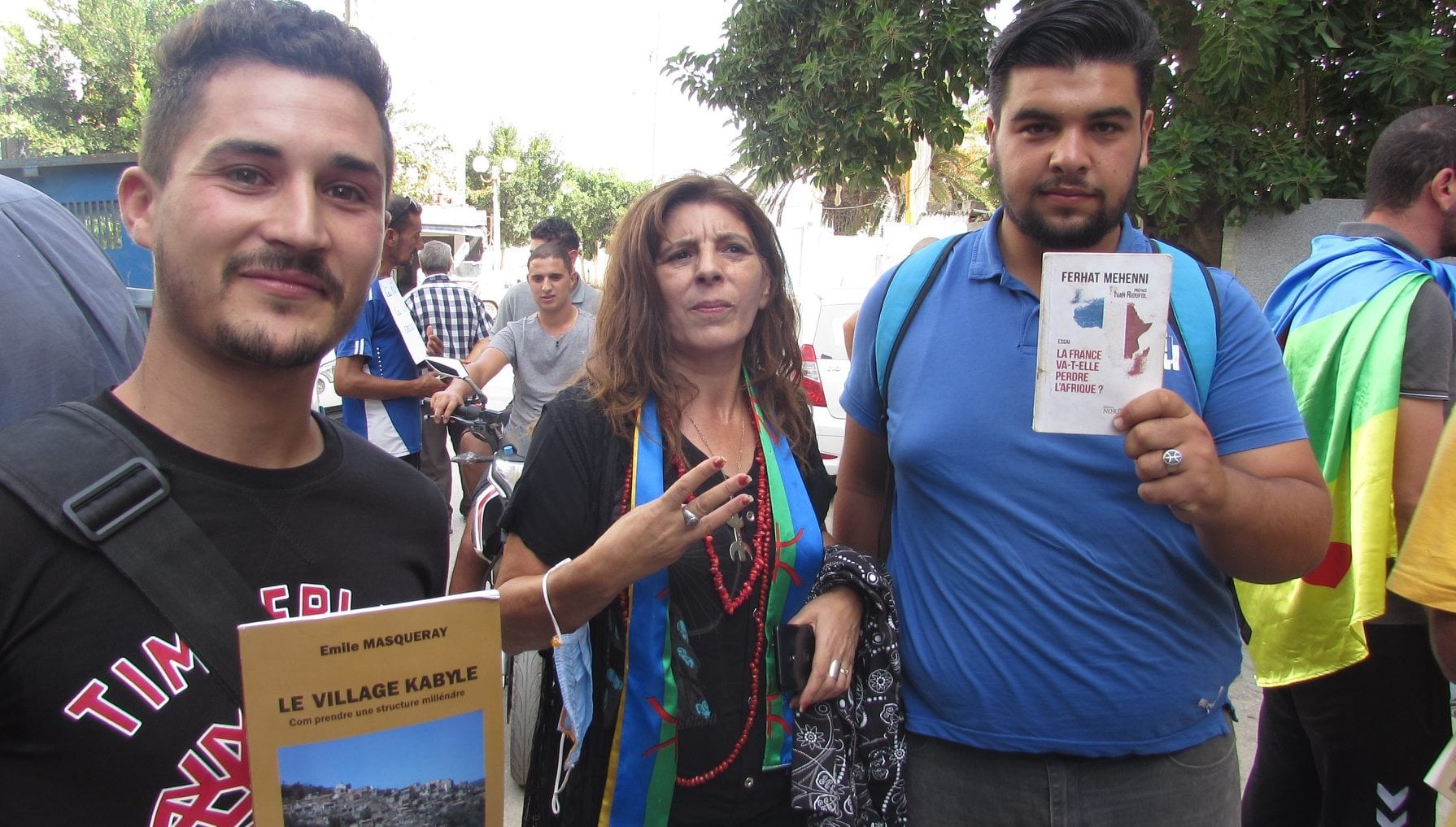John Ormsby (1829–1895) is the British who translated Cervantes’ work into English.
It was while making a trip to North Africa, newly colonized by France, on behalf of Thomas Cook, the president of the new travel company Cook Travel that he wrote down on paper in book form his impressions, Autumn Rambles in North Africa, travel sketches from La Grande Kabylie and Tunis during 1863-4. Whatever he had the mentality of the primitive European settler, which means, racist, he had yet made the distinction between the different North African people. One of these people was the Kabyle people, whose feelings were divided between primary racism and jealousy. They had a noticeable advance in the socio-political organization of Kabylia, which he described as the wild Swiss. And he was not far from claiming the Kabyle people as being of European origin.
The district which the French, somewhat grandiloquently, call ‘ La Grande Kabylie,’ is a rugged mountainous region, lying partly in the province of Algiers, partly in that of Constantina. It may be roughly described as a quadrilateral, about eighty miles by sixty in extent, bounded on its north side by the Mediterranean; on the south by the great plain of the Medjana, so famous all through North Africa for its breed of horses ; on the west by the stream of the Isser ; and on the east by the high road from Setif to Bugia. Its limits are further defined by the position of four rather important French settlements, one at each corner : Dellys and Bugia at the north-west and north-east, Aumale and Setif at the south-west and south-east. Within these boundaries lies the coimtry which, both as regards its scenery and the character and institutions of its in- habitants, may claim to be considered the Switzerland of North Africa. The noble chain of the Djebel Djurdjura, with peaks rising more than seven thousand feet above the level of the sea, runs diagonally from the south-western angle, near Aumale, to the north-eastern, where it terminates with the Mount Grouraya and Cape Carbon, just above Bugia. North and south of this chain lie two main lines of valley ; that of the Sahel on the south, that of Sebaou on the north. These are the leading geographical features of the Great Kabylia. The rest of its area is a wild confusion of lofty mountain ridges, each with a village perched upon its extremest point, and separated from its neighbour by a deep dark ravine, whose sides are clothed with tangled thickets of evergreen oak, or luxuriant groves of fig and olive. So much for the general aspect of the country.
It is inhabited by a race that in almost every particular presents a strong contrast to the Arabs of the plains below. The Arab is lithe and slender in figure, and generally of an aquiline cast of countenance; the Kabyle is squarely .and sturdily built, rathei* broad-faced, and with a nose of the type which is described as ‘ordinaire’ on a French passport. The normal state of the Arab is that of a wanderer and a dweller in tents : he has no instinctive attachment to the soil, and when he does take to a settled life, it is as it were under protest ; contenting himself with an un- substantial and flimsy dwelling, and bestowing no more labour on the ground than is required to raise him a scanty crop of barley. The Kabyle, on the other hand, clings as tightly to his rocks as a limpet: he builds himself a comfortable, substantial house, with stone walls and a tiled roof, and changes the rough mountain side into a rich garden.
The Arab hates labour and has few manufactures ; the Kabyle is industrious, and a clever handicraftsman, especially in the working of metals. The Arab lies freely and objectlessly, and pilfers for the love of pilfering : his statement is value-less, except as a means of arriving at the truth by a kind of inductive process.
The Kabyle, as a general rule, tells the truth, and, unless you are at enmity with him, respects your property. He will make a hard bargain with you, but, once made, he will keep to it ; unlike the Arab, who, if you leave him a loophole, will wriggle out through it. With strangers there is a mixture of shyness and obsequiousness in the Arab’s behaviour, while about the Kabyle there is an unmistakable air ofindependence and self-reliance, as if he did not much care what you thought about him.
In short, there is little or nothing of the Asiatic about the Kabyle. Even his Mahomedanism is of an unoriental cast. Though he does not deny the lawfulness of polygamy, he considers that on the whole a man ought to be content with one wife, and admits the woman to be a perfectly rational being, quite fit to be entrusted with her liberty, deserving of social equality, and not born to do more than her fair share of the work of the household. His form of government is essentially democratic : the Amin, who corresponds generally to the sheikh amongthe Arabs, is elected by the universal suflfrage of his village. The Amins of all the villages of a tribe form its parliament ; and one of the number, elected by themselves, acts as the chief of the whole tribe — ^the head magistrate in peace, and commander of the forces in war. The tribes, again, bind themselves together by a * soflf,’ or league, offensive and defensive ; so that, as General Daumas says, * politically speaking, the Kabylie is a kind of savage Switzerland.’ It is to this federal organisation of the tribes that he, as well as Jules Gerard, traces the origin of the name, which in its Arabic form of K’bail signifies nothing more than * The Tribes.’
It is far more easy to say what the Kabyle is not than what he is. Whatever he may be, he certainly is not a member of the Arab family. He is, geologically speaking, the oldest formation among the many strata of which the population of North Africa is composed. He may be the descendant of some of the ancient Libyan tribes mentioned by Herodotus, or of the Massyli, Masaesyllii, and others found in occupation by the Eomans, or of the Vandals driven into the mountains by Belisarius, or the offspring of a mixture of all these ; but at any rate he dates from a period earlier than that of the invasion of Africa by the Saracens. In default of any positive evidence, it must be confessed there is a certain amount of probability on the side of the Vandalic theory. Unless the Vandals were completely exterminated, or absorbed by the Arab invaders — neither of which hypotheses is at all a likely one — they are still to be found in North Africa.
It is true the same argument holds good with respect to the Libyans, ancient Numidians, and others; but then we have the Touaregs, the Chaambi, the Beni-Mzabites, and several other Desert and Sahara tribes, quite distinct from the Arab, and much more probable representatives of the older peoples of Barbary than the Kabyles. Assuming, then, that there is somewhere the conquered remnant of a Gothic race, where are we so likely to find it as in the fastnesses of the mountains ? But, wherever, all liirough North Africa, the mountains are highest and steepest, there we do find a people with a number of characteristics, physical as well as moral, which are decidedly Gothic, and whose tradition besides generally points to a Northern origin.



Rugged mountainous region east of Algiers, adjacent to the Mediterranean, in Algeria. One of North Africa’s most densely populated areas, it is culturally and linguistically unique. Ancient Berber culture, languages, customary laws, social organization, and traditions predominate. Fiercely independent, Kabyles maintained their own political and administrative institutions under the Ottomans (ca. 1525 – 1830 ) and were the last stronghold against French colonization (conquered ca. 1847 – 57 ).
Source:
The Oxford Dictionary
“They experienced a notable advance in the socio-political organization of Kabylia, which he described as wild Switzerland. And it was not far from claiming that the Kabyle people were of European origin.”
You should not know that before Rome, there were the Libyan Atlanteans in Latium punic term who will be the founders of Rome who will give emperors seventh severe e Lybian and other Africans and later with the fall of the Roman republic the birth of Christian EUROPE with the death of Latin Christian Africa.
And he was not far from claiming that the Kabyle people were of European origin. ”
It is rather the Europeans who are of African origins
I’m pretty sure if you do a DNA test without cheating, the truth will come out.
Kabyle people do not know the truth about their past. And yet they have been civilizers for others. Their ancient or pre-existing DNA is everywhere but does not know because their history is more than falsified and manipulated.
Only one question: who are the oldest peoples who hold knowledge?
As such, it should seek to understand what happened so that the Christian Europe born in the 9th exceeds the African millennia. I have my idea …
Tell us what is your idea. I am really interested in your comments which join the spirit of this website.